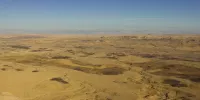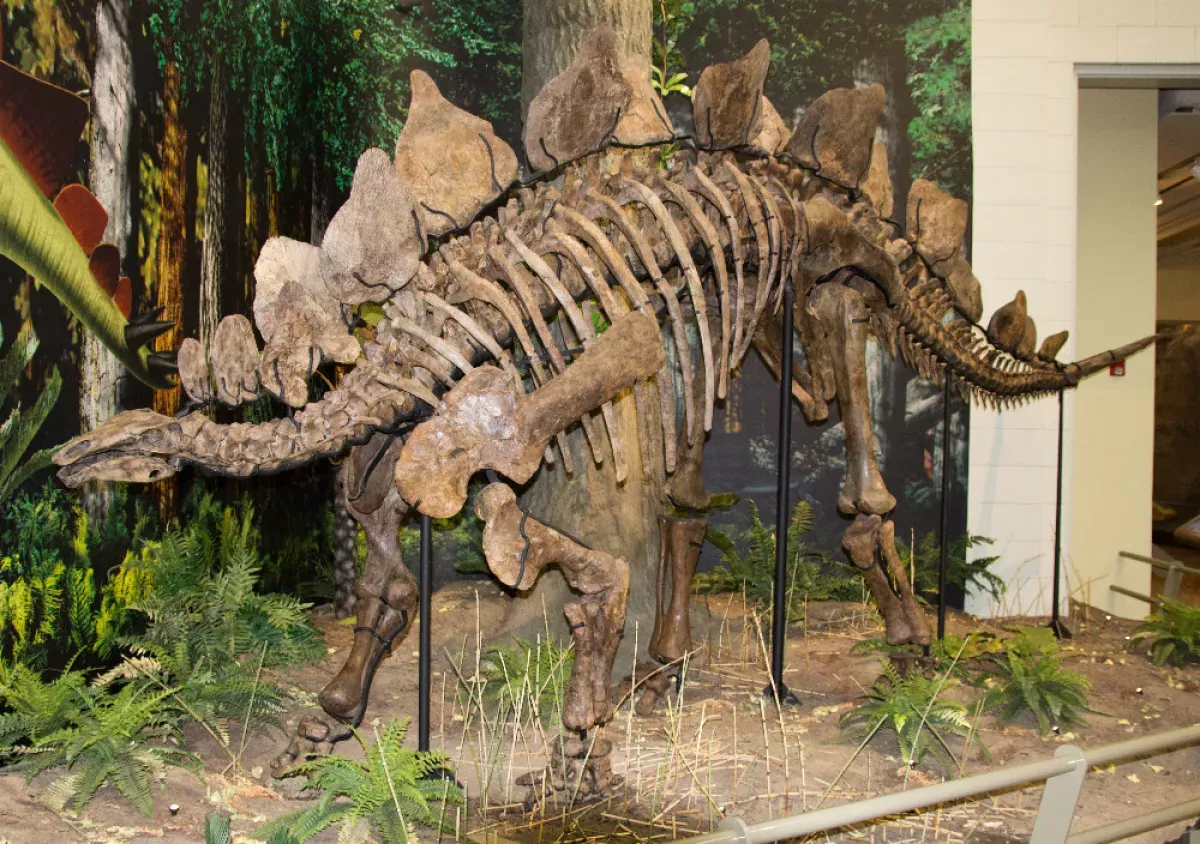Dinosaurs, a diverse group of reptiles, emerged around 243-233.23 million years ago during the Triassic period. Their dominance on land began after the Triassic-Jurassic extinction event, continuing through the Jurassic and Cretaceous periods. The fossil record reveals that birds evolved from theropod dinosaurs in the Late Jurassic, making them avian dinosaurs. They are the sole dinosaur lineage to survive the Cretaceous-Paleogene extinction. Consequently, dinosaurs are classified as avian dinosaurs (birds) and non-avian dinosaurs, encompassing all other extinct dinosaurs.
1907: Discovery of Giraffatitan brancai and Diplodocus
In 1907, the remains of Giraffatitan brancai, the tallest and heaviest dinosaur known from good skeletons, were discovered in Tanzania. In the same year, the 27-meter-long Diplodocus was discovered in Wyoming and displayed in Pittsburgh's Carnegie Museum of Natural History.
1912: Completion of Giraffatitan brancai skeleton assembly
By 1912, more remains of Giraffatitan brancai were discovered in Tanzania, and bones from several similar-sized individuals were incorporated into a skeleton now mounted and on display at the Museum für Naturkunde in Berlin.
1912: The Lost World by Sir Arthur Conan Doyle
Sir Arthur Conan Doyle's book "The Lost World," featuring dinosaurs, was published in 1912.
1914: Gertie the Dinosaur
The first animated dinosaur, Gertie the Dinosaur, premiered in 1914.
1917: Reginald Hooley's Study of Sauropod Skin
In 1917, Reginald Hooley conducted a study on a sauropod forelimb with preserved skin, originally discovered in 1852.
1924: Discovery of Clavicles in Oviraptor
In 1924, a discovery was made that would later challenge a prevailing theory about dinosaurs. Clavicles, or a fused wishbone, were found in the Oviraptor fossil. At the time, this was misidentified as an interclavicle, but this discovery would later be critical in supporting the theory of birds descending from dinosaurs.
1933: King Kong
The iconic movie "King Kong," featuring dinosaurs, was released in 1933.
1954: Godzilla
The first "Godzilla" film, a movie featuring a monstrous dinosaur-like creature, was released in 1954, spawning a long-running franchise.
1968: Robert T. Bakker proposes dinosaur endothermy
Robert T. Bakker challenged the prevailing view of dinosaurs as ectothermic in 1968, suggesting they were endotherms and lived more active lives.
1969: Discovery of Deinonychus
John Ostrom's 1969 description of the bird-like dinosaur Deinonychus challenged the prevailing view of dinosaurs as sluggish and cold-blooded, suggesting they were active and potentially warm-blooded.
1971: Discovery of Velociraptor attacking Protoceratops
A significant discovery in 1971 in the Gobi Desert provided evidence of dinosaur-on-dinosaur attacks. The fossil showed a Velociraptor attacking a Protoceratops.
1972: Bakker expands on dinosaur endothermy arguments
Bakker further supported his arguments for dinosaur endothermy in 1972, using evidence based on energy requirements and predator-prey ratios, contributing to the dinosaur renaissance.
1973: Harry Jerison challenges dinosaur brain size interpretations
In 1973, Harry Jerison refuted the idea of dinosaurs as having disproportionately small brains, suggesting their brain size was appropriate for their body size.
1978: Discovery of Maiasaura nesting ground
Jack Horner's 1978 discovery of a Maiasaura nesting ground in Montana provided evidence of extended parental care among ornithopods.
1980: Bolide Impact Hypothesis Gains Traction
The bolide impact hypothesis, suggesting a large extraterrestrial impact caused the K-Pg extinction event, gained significant attention in 1980 thanks to the work of Walter Alvarez, Luis Alvarez, and their colleagues. They pointed to a sudden increase in iridium levels found globally at the Cretaceous–Paleogene boundary as evidence.
1984: Dale Russell's Dinosaur Diversity Analysis
In 1984, Dale Russell conducted an analysis on dinosaur diversity prior to the K-Pg extinction event. His findings challenged the prevailing view of a long-term decline in diversity, suggesting that factors like varying preservation potential between rock units needed to be considered.
1986: Publication of "The Dinosaur Heresies"
Robert T. Bakker's book "The Dinosaur Heresies," published in 1986, presented further evidence for active lifestyles in dinosaurs, sparking a renewed interest in dinosaur research.
1990: Jurassic Park by Michael Crichton
Michael Crichton's best-selling novel "Jurassic Park," featuring cloned dinosaurs, was published in 1990.
1990: Improved Specimen Quality from New Localities
Since 1990, new fossil localities, particularly in Asia and North America, have yielded more complete and higher-quality dinosaur specimens, leading to a better understanding of these animals.
1990: Publication of "The Dinosauria" (1st Edition)
The first edition of the comprehensive reference book "The Dinosauria" was published in 1990, providing valuable insights into dinosaur research and stimulating further interest in the field.
1991: Discovery of the Chicxulub Crater
In 1991, the Chicxulub crater, a 180 km wide impact site in the Yucatán Peninsula of Mexico, was identified and publicized by Alan Hildebrand and colleagues. This discovery provided significant support for the bolide impact hypothesis, suggesting a massive impact occurred around 66 million years ago.
1991: Discovery of Mineralized Structures in Tyrannosaurid Bones
Mary Schweitzer and colleagues discovered mineralized structures resembling red blood cells and collagen fibers in tyrannosaurid bones in 1991.
1993: Discovery of Citipati osmolskae in brooding position
A Citipati osmolskae specimen found in 1993 in a brooding position suggests the use of feathers for egg incubation.
1993: Jurassic Park Film Adaptation
The film adaptation of "Jurassic Park," based on Michael Crichton's novel, was released in 1993.
1998: Paul Sereno's Review Paper on Dinosaur Phylogenetics
Paul Sereno's 1998 review paper on dinosaur phylogenetics contributed to the growing understanding of dinosaur evolutionary relationships.
2000: Shifting Perspectives on Deccan Traps and Chicxulub Impact
After 2000, a more nuanced perspective emerged regarding the causes of the K-Pg extinction event. While the Chicxulub impact gained recognition as a primary factor, researchers began acknowledging that the Deccan Traps eruptions may have also contributed to the extinction.
2000: Discovery of a Hadrosaur Femur in New Mexico
In 2000, Spencer Lucas and colleagues discovered a single hadrosaur femur bone in the San Juan Basin of New Mexico, in a rock layer dating back to the early Paleocene epoch, approximately 64.8 million years ago. This finding raised questions about the timeline of dinosaur extinction.
2003: Evidence of Cannibalism in Majungasaurus
In 2003, tooth marks found in Madagascar provided evidence of cannibalism in the theropod Majungasaurus.
2004: Fastovsky's Challenge to Dinosaur Decline Theory
In 2004, David Fastovsky and colleagues challenged the theory of a gradual decline in dinosaur diversity before the K-Pg extinction event. They proposed that dinosaur diversity may have actually increased leading up to the extinction, sparking debate within the scientific community.
2004: Publication of "The Dinosauria" (2nd Edition)
The release of the second edition of "The Dinosauria" in 2004 provided updated information on dinosaur research, reflecting the ongoing advancements in the field.
2005: Discovery of Soft Tissue in Tyrannosaurus Rex Femur
In 2005, Mary Schweitzer's team reported the presence of soft tissue, including blood vessels and connective tissue, in a Tyrannosaurus rex femur, suggesting the preservation of original organic material over vast timescales.
2005: Complex Air Sac System in Dinosaurs
In 2005, research led by Patrick M. O'Connor provided evidence that large, meat-eating dinosaurs had a complex system of air sacs, similar to those found in modern birds. The lungs of these theropod dinosaurs likely pumped air into hollow sacs in their skeletons, just like birds.
2007: Timeline of Major Dinosaur Groups by Holtz
In 2007, Holtz published a timeline outlining the major dinosaur groups.
2008: Increase in New Dinosaur Species Named
By 2008, the rate of new dinosaur species being named had increased significantly, with over 30 new species identified each year.
2008: Aerosteon riocoloradensis Discovery
Further supporting the theory of a bird-like respiratory system in dinosaurs, the Aerosteon riocoloradensis fossil was described in 2008. CT scans of this dinosaur's fossil bones showed evidence of air sacs within its body cavity, strengthening the link between dinosaurs and birds.
2009: Surge in Sauropodomorph Discoveries
Between 2009 and 2020, there was a notable increase in the number of new sauropodomorph species being named, averaging 9.3 per year.
2009: Soft Tissue and Protein Preservation in Brachylophosaurus Femur
In 2009, Schweitzer's team reported similar soft tissue preservation and identified proteins like collagen in a Brachylophosaurus femur, further supporting the possibility of long-term soft tissue preservation.
2015: Preservation of Collagen and Red Blood Cells in Eight Cretaceous Dinosaur Specimens
In 2015, Sergio Bertazzo and colleagues discovered collagen fibers and red blood cells in eight Cretaceous dinosaur specimens, indicating that soft tissue preservation might be more common than previously believed.
2016: Study suggests some dinosaurs produced closed mouth vocalizations
A 2016 study proposed that some dinosaurs might have produced closed-mouth vocalizations like cooing and hooting, similar to birds and reptiles, by inflating their esophagus or tracheal pouches.
2016: Estimated Number of Dinosaur Species
In 2016, researchers estimated that between 1,543 and 2,468 dinosaur species lived during the Mesozoic Era.
2017: Revision of Dinosaurian Systematics
In 2017, Matthew G. Baron, David B. Norman, and Paul M. Barrett proposed a significant revision to how dinosaurs are classified, suggesting a closer relationship between Ornithischia and Theropoda than previously thought.
2018: Over 900 Non-Avian Dinosaur Genera Identified
By 2018, paleontologists had confidently identified over 900 distinct genera of non-avian dinosaurs.
2020: Deccan Traps: Potential Mitigation of Impact Winter?
In 2020, a study by Alfio Chiarenza and colleagues presented a new perspective on the role of the Deccan Traps. They suggested that the long-term warming caused by the eruptions' carbon dioxide emissions may have actually lessened the severity of the impact winter caused by the Chicxulub impact.
2020: More Sauropodomorphs Named Since 1990
More sauropodomorph species were named between 1990 and 2020 than in all previous years combined, highlighting the impact of new fossil discoveries.
2021: Preserved cloacal vent exterior of Psittacosaurus described
The year 2021 saw the description of a well-preserved cloacal vent exterior from a Psittacosaurus. The specimen exhibited lateral swellings similar to crocodylian musk glands and pigmented regions, hinting at a potential signaling function.
2023: Fossilized larynx of Pinacosaurus discovered
A fossilized larynx from a Pinacosaurus specimen was described in 2023. The structure, similar to non-avian reptiles, suggests the dinosaur could make bird-like vocalizations.
2023: New size estimates for Bruhathkayosaurus
In 2023, recent size estimates suggested the titanosaur Bruhathkayosaurus matleyi may have reached lengths of up to 44 meters and weighed between 110,000–170,000 kg, potentially making it one of the largest animals to have ever existed.
Mentioned in this timeline
Tanzania officially the United Republic of Tanzania is an East...

Pittsburgh is a city in southwestern Pennsylvania situated at the...

A desert is a landscape characterized by minimal precipitation leading...

Books are a means of storing information as text or...
Mexico officially the United Mexican States is a North American...
Montana a landlocked state in the Mountain West is bordered...
Trending

3 months ago Brock Bowers' Injury Concerns: Raiders' Crosby Also Added to Injury Report

2 months ago Edison Upgrades South Pasadena Electrical Grid Amidst Storm Recovery, Lifting Evacuation Orders

John Stamos is an American actor and musician who rose to fame as Blackie Parrish on General Hospital earning a...

8 months ago Austin Hays emerges as a top Fantasy Baseball Waiver Wire pickup.

1 month ago Maxxine Dupri, assisted by AJ Lee, dethrones Becky Lynch for Intercontinental Title on Raw!

7 months ago Kiefer Sutherland and Rebel Wilson star in 'Tinsel Town'; First Look Released!
Popular

Tucker Carlson is an American conservative political commentator known for...

XXXTentacion born Jahseh Dwayne Ricardo Onfroy was a controversial yet...

Ben Shapiro is a prominent American conservative political commentator media...

Candace Owens is an American conservative political commentator and author...

William Franklin Graham III commonly known as Franklin Graham is...

Ursula Gertrud von der Leyen is a prominent German politician...
